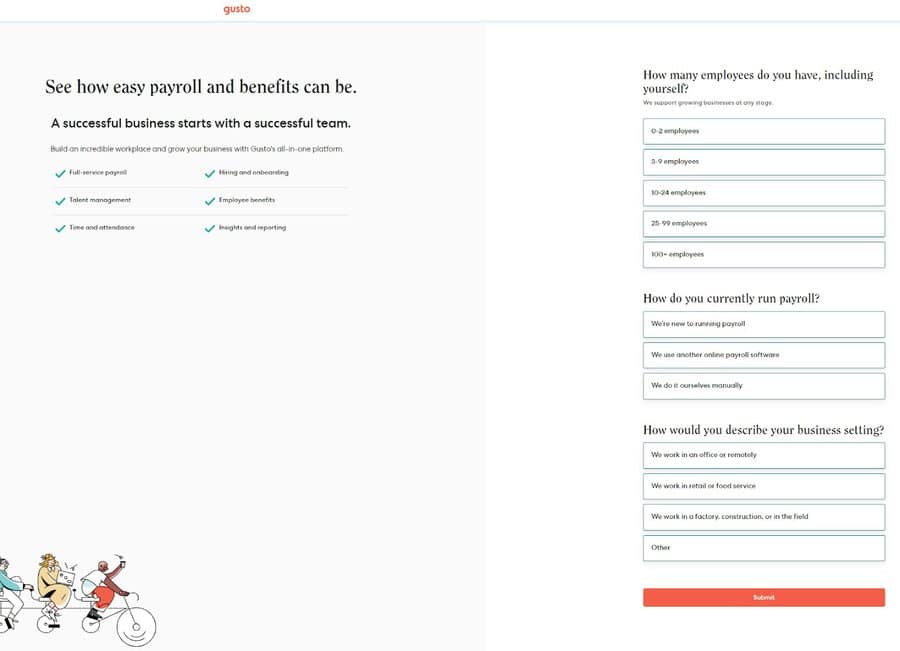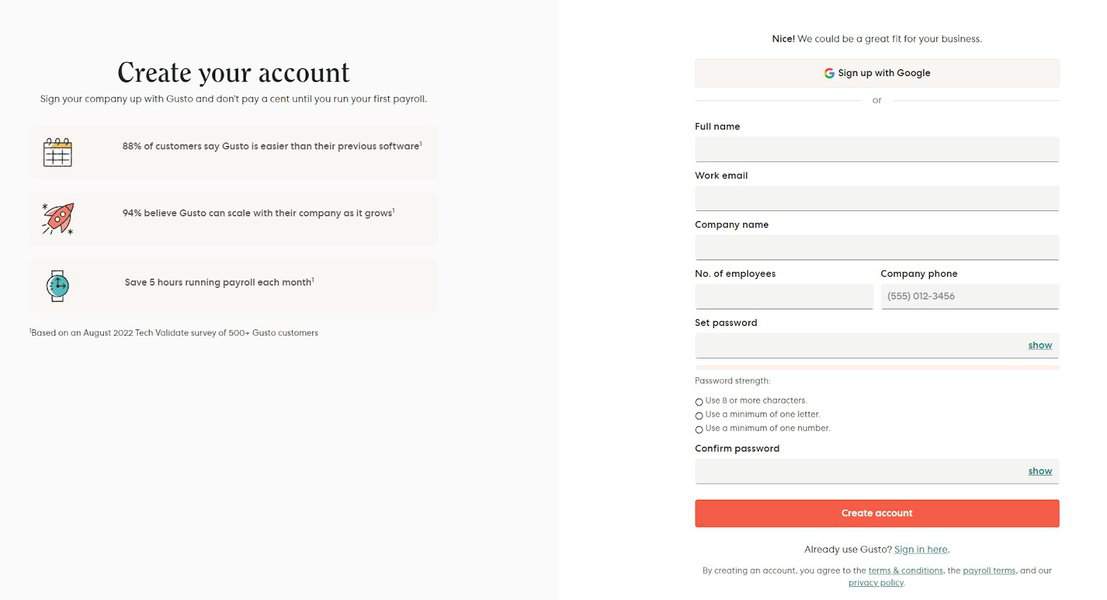How to Create a Lead Magnet That Converts
Written by: Victoria Yu
Victoria Yu is a Business Writer with expertise in Business Organization, Marketing, and Sales, holding a Bachelor’s Degree in Business Administration from the University of California, Irvine’s Paul Merage School of Business.
Edited by: Sallie Middlebrook
Sallie, holding a Ph.D. from Walden University, is an experienced writing coach and editor with a background in marketing. She has served roles in corporate communications and taught at institutions like the University of Florida.
Updated on March 3, 2025

The idea of product trials and free samples has come, full force, into the era of content marketing. That means companies that neglect offering prospective customers chances to try-before-they-buy products and services will likely fall from grace in today’s consumer markets.
Today, successful content marketing strategies rely heavily on good lead magnets – content that provides value to the consumer and entices them to willingly offer up their personal information to receive content they see as being useful to them.
With increasing privacy concerns, it is becoming more important than ever that companies acquire lead info from willing consumers. Therefore, instead of resorting to data mining or using other dubious means for acquiring prospective customers’ contact information, companies are now tasked with creating compelling lead magnets, designing them to attract their target prospects like bees to honey.
So, if you’ve been struggling with your lead magnets, don’t worry. This guide will walk you through the essential steps you can take to create a lead magnet with the power to convert a potential customer’s passing curiosity into a surefire lead.
Key Takeaways
A lead magnet is a piece of content a company provides a consumer in exchange for their contact information.
As lead magnets are tangentially related to a company’s full product offering, a consumer who expresses interest in a lead magnet could be a potential client for a business.
Lead magnets and other forms of content marketing are becoming par for the course in online advertising as intrusive advertising loses prominence.
To create a successful lead magnet, a company should first identify its target customer, know the customer’s pain point, choose a content type, create exemplary content, and integrate the lead magnet into its website.
What’s a Lead Magnet?
Usually offered through search engine marketing, a lead magnet is a tool, a piece of content, or a special deal offered by a company, free of charge to potential customers in exchange for the person’s contact information. Lead magnets are a core part of a business’s content marketing strategy, which uses content such as articles, graphics, and videos to attract, engage, and retain customers.
The content offered is usually a sample of the business’s full product offering or a display of its expertise, meaning that people who choose to pursue it usually have a need for the business’s product or service — in other words, those desiring the content are possible leads for the company’s products and services. With that in mind, a company can use the lead’s contact information to reach out to them and begin making a pitch for their products and/or services.
For example, if you Googled “best laptops for professionals ” and the first result displayed “Top 10 Best Features of Laptops for Business Professionals,” the ranking of the ten best features would be the lead magnet. Why would this ranking attract interest from prospective customers? Because business professionals in search of a great laptop would want to know which features would be best for them; which features would surely want their new laptop to have. The company offering this lead magnet would then ask for your name and email address in exchange for the information. Once you request and receive the information, the company would then attempt to sell you one of their laptops.
Lead magnets are usually hosted on designated lead magnet landing pages on a company’s website. The framework used to manage a lead magnet and landing page’s success is called a lead generation funnel or lead magnet funnel.
Why Should I Use Lead Magnets?
You may be wondering: why would you need to go through all this effort to make content for your lead magnet and set up a lead magnet landing page on your website.
For starters, using lead magnets as bait provides the email addresses of high-quality marketing-qualified leads, meaning that the potential customer has a notable interest in your marketing materials (your lead magnet) and is more likely to become a customer.
So if your business is suffering from a deluge of poorly-qualified cold leads, a lead magnet could be a great way to fill your sales funnel with hotter leads.
But why should you use lead magnets over other types of advertising? Wouldn’t a banner ad or bumper ad be good enough?
While that might’ve been true in the old days, businesses have moved on from intrusive marketing, such as bumper and banner ads, to more permission-based marketing, such as SEO optimization and search engine marketing on Google. This is shown in a 2022 study of the top sources of online ad revenue, in which search ads took the lead at 40.2% over display ads at 30.3%.
Using bumper or banner ads in today’s industry will cause consumers to shun your intrusive marketing outright. So in order to stand out amongst competitors and get consumers’ clicks in search engine marketing, businesses must promise searchers something exceptionally useful and relevant to their needs in their headers — in other words, a lead magnet.
To give a clearer idea of how valuable lead magnets will be to the future of your business, consider this: the global content marketing industry revenue was estimated to be $63 billion in 2022, and is expected to grow to $107 billion by 2026. So, it’s best to get a start on learning to use lead magnets today, so you’ll be poised to capture a larger share of your market, starting tomorrow!
How to Create an Effective Lead Magnet
That being said, let’s go through a step-by-step guide on how you can create a winning lead magnet that will help you bring in fresh customers.
1. Research Your Target Audience
In the same way that different fish prefer different bait, different types of consumers will want different content in their lead magnet. For example, older generations might prefer longer informational articles, while younger generations might, instead, prefer short video content. That’s why the first step is to know your ideal customer profile (ICP), to get a good sense of your target customer’s demographics, habits, budget, and more.
To help you out on that front, here’s a list of attributes you could focus on for both B2B and B2C companies. Though this isn’t an exhaustive list, it’s a good starting point.
| B2B | B2C |
|---|---|
| Firm Size | Age |
| Annual Revenue | Gender |
| Industry | Ethnicity |
| Growth Rate | Occupation |
| Team Size | Education |
| Average Order Value | Average Order Value |
| Location | Location |
| Preferred Communication Channels | Preferred Communication Channels |
| Challenges | Challenges |
| Reasons for Purchasing | Reasons for Purchasing |
| Goals | Goals |
Having a solid grip on your ICP is especially important if you market to different customer segments – if two customers from different segments are interested in the same lead magnet, your contact information form must then ask some sort of question to distinguish between your different ICPs.
2. Know Your Customer’s Pain Points
Next is to understand your customer’s pain point, or what problem they’re trying to solve that would lead them to need your product. Usually, your product is developed to solve a particular issue or meet a certain desire. With that pain point in mind, come up with ideas for simple tools or informational articles that would help people facing that situation.
For example, let’s say our company sells payroll software to small businesses. What are some issues a small business owner or manager would encounter? Maybe they need help calculating their taxes or running payroll for several employees at once. With those situations in mind, you could create lead magnets that appeal to these specific needs, and link each of them back to your larger product.
3. Choose a Content Type
Armed with the knowledge of your ideal customer and their pain points, you should now have a good idea of what sort of person you’re targeting, what they need, and what they’re feeling when they go browsing on the internet. With that information, decide what form of content would be best for your lead magnet. Different lead magnets and media types convey different messages, so choose wisely.
Here are some lead magnet ideas that you could use:
- An infographic or informational video
- A social media post
- A free consultation
- A free trial
- A step-by-step guide
- A template
- A tool
- Quiz results
- A whitepaper article
Let’s take a deeper dive into our example of selling accounting software. Let’s say our ideal customer profile is small businesses with at least 30 employees whose pain point is that they’re having trouble calculating payroll as the company grows bigger. Taking that pain point one step further, we could say that the specific need we’re targeting with this particular lead magnet is that the customer is worried about complying with the IRS’s laws for employers as the business grows.
With those considerations in mind, we would see that more detailed expertise and content (such as whitepapers, consultations, and free trials) would be preferable to short-form content (such as an infographic). Plus, because tax laws vary by state and business size, one-size-fits-all lead magnets such as step-by-step guides, templates, and quizzes would be less useful to our consumers.
4. Do It Better Than Anyone Else
Now that you know what sort of content you’ll make and what explicit need it targets, all that’s left is to actually create it. In order to stand out from competitors and boost your brand reputation, your lead magnet should be helpful, credible, up-to-date, and shareable. You will need to focus on your unique selling point from competitors, and consider how you could incorporate that into your lead magnet.
Now, the elephant in the room when it comes to content creation is the question of whether or not to use AI to do it. While AI will certainly produce hordes of content for cheap, generative AI is trained off of content already in circulation on the internet. In other words, it can’t produce unique insights and will blend right into the crowd of other content. It could even put out inaccurate information!
Thus, to make the best content possible, we’d highly recommend using your learned experts, writers, and artists to make high-quality content that provides unique value to the consumer.
5. Set Up Your Header, Landing Page, and Contact Information Form
Now that you’ve got the meat of your lead magnet set up, it’s time to integrate it into your search engine marketing strategy by writing an enticing header, designing a landing page, and finalizing your contact information form.
First up is the header, which is the big tagline text you see when you get search results back. You’ll want a header that accurately describes what your lead magnet is and entices customers to click on it. Be sure not to make it too verbose, though, or it might get cut off by the browser.
Let’s look at a real-life example. When I Google “How do I run payroll,” Gusto’s sponsored ad (meaning they paid for search engine optimization) comes up. The lead magnet is payroll software at no cost.


When I click on the link, I’m taken to their landing page, which is a standalone webpage on their website specifically to host this lead magnet. It’s best to have a separate landing page for each lead magnet in order to better track which lead magnet yields the most website visitors.
As you can see, it’s not as easy as simply getting the free payroll software when I get to the landing page – I have to answer some questions about myself. As we mentioned in the first step, this lets Gusto judge if I’m a qualified lead or not and what target audience I might fall into.


Finally, Gusto asks me to submit a contact information form and set up an account before I access the tool, so they can follow up with me and see if I’d be interested in their other product offerings (for full price).
Generally, you’ll want to ask for the lead’s name and email address at the very least so you can begin building an email list for marketing email campaigns. Depending on how much you want to qualify your leads (and how patient you think they are), you could even ask them demographic and firmographic questions to see if they fit your ideal customer profile or not.


Conclusion
Lead magnets are a great way to attract hot leads online who have a need for your product or your services. After attracting leads, with a well-designed contact information form, your sales team can immediately qualify and score the inbound lead and reach out to them to begin the sales process.
As search engine marketing becomes more and more prevalent, the quality of lead magnets put out by your competitors will only grow better and better. That’s why you should follow these simple steps to create the perfect lead magnet for your business, highlighting your business’s expertise and value so you can attract more prospects than ever before.
FAQs
What should I do once someone submits their contact information form?
Once a potential lead submits a contact information form in exchange for the lead magnet, a sales representative should follow up with them as soon as possible—ideally within an hour—to begin making a pitch. The longer you wait, the higher the chance that they’ll be snatched away by a competitor!
In some cases, a lead might not be ready to complete a sale just yet. This is especially the case with more informational lead magnets, such as an educational article or case study. In that case, your sales rep should focus on nurturing the lead until the potential customer ripens into a prospect and is ready to close.
What sort of software tools can I use to help create and manage lead magnets?
Designated lead management and tracking software can help you set up your landing pages and create contact information forms. Some vendors of lead management systems are HubSpot, EngageBay, and Pipedrive. These tools usually also double as CRMs, which track each lead that comes in from the lead magnet funnel until they make a purchase.
Again, we’d recommend not using AI to create content for your lead magnet, as the content produced will, by virtue of being trained off of other companies’ content, be extremely similar to the lead magnets your competitors put out. To get high-quality and unique content, rely on your human employees instead.
What are some best practices for creating lead magnets?
When making and managing lead magnets, some best practices are to have a visually stunning landing page, use keywords that will boost your SEO optimization in your header, and to keep your lead magnets up to date with modern trends and information. For that last tip, you should encourage your employees to schedule some time regularly to research the most recent market trends and consumer sentiments to ensure your lead magnet is still relevant and schedule some time every once in a while for your content creators to update your lead magnets to match.
Beyond advertising through search engine marketing, you should also post links to your lead magnet on social media, and share it organically to get the most potential customers.
